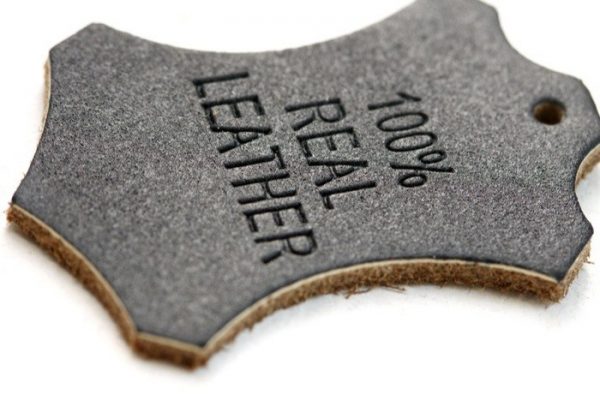All About Leather
Why Is Real Leather Better Than Vegan Leather ?
In recent years, the debate between real leather and vegan leather has become a hot topic in fashion circles, lifestyle communities, and among environmentalists. The two materials often go head-to-head, each having its advocates and detractors. But when we delve deeper into the characteristics that matter—durability, beauty, and sustainability—real leather stands out as the superior choice. In this article, we’ll explore why high-quality, vegetable-tanned leather, often a byproduct of the meat industry, not only offers timeless elegance but also makes a compelling case for being more sustainable and long-lasting than its vegan counterparts. And by the time you reach the conclusion, you will be convinced about why is real leather better than vegan leather.
Definitions
Real Leather

Real leather, also known as genuine or natural leather, is made from the hides of animals, most commonly cows. The process of making leather is ancient, with roots dating back to prehistoric times when early humans used animal skins for clothing and shelter. Over millennia, the process has been refined and now includes various tanning methods, such as vegetable tanning, to enhance the leather’s durability, appearance, and resistance to decay. Real leather is revered for its long-lasting quality, unique texture, and ability to age gracefully.
[Important: What is Full Grain Leather?]
Vegan Leather
On the other hand, vegan leather offers an animal-free alternative and is a relatively new invention compared to its genuine counterpart. Vegan leather can be made from a range of materials including polyurethane, PVC, and more recently, plant-based sources like mushrooms or pineapples. Despite its ethical appeal, vegan leather often relies on petroleum-based materials for its production, raising concerns about its environmental impact. Additionally, its aesthetic and physical properties can differ significantly from natural leather, often lacking the same durability and rich texture that genuine leather possesses.
Durability

When it comes to longevity and wear, real leather indisputably takes the lead. High-quality, vegetable-tanned leather can last for decades if properly cared for. The strength of the fibers in genuine leather gives it a natural resilience to tearing and allows it to maintain its shape over long periods of time. As it ages, real leather tends to acquire a patina—a sheen developed through years of use, adding character and beauty to the material.
[Good Read: Are Leather Bags Durable?]
In contrast, vegan leather generally falls short in the durability department. While technology has improved the quality of vegan leather, the material still tends to degrade more quickly than its animal-derived counterpart. Vegan leather made from polyurethane or PVC is particularly prone to wear and tear, often peeling or cracking within a few years of use. Even plant-based vegan leathers, while promising, have not yet proven themselves to withstand the test of time like genuine leather.
Beauty

Real leather is unparalleled in its natural beauty and aesthetic appeal. Each piece of genuine leather is unique, boasting individual characteristics like grain, color variations, and even slight imperfections, which add to its charm. Over time, real leather develops a rich patina that enhances its visual appeal, making each product truly one-of-a-kind. The tactile experience of high-quality leather, its softness, and the way it feels against the skin, adds an extra layer of luxury that is hard to replicate.
Vegan leather, while offering a range of textures and colors, often lacks the depth and richness that comes with real leather. Synthetic options may imitate the appearance of genuine leather but rarely capture the nuanced characteristics like the natural grain or the development of a patina over time. The material is more uniform, lacking the unique individuality that many people find appealing in genuine leather products.
Sustainability
In the realm of sustainability, real leather has some compelling advantages. First and foremost, leather is often a byproduct of the meat industry. By utilizing hides that would otherwise go to waste, leather serves as a form of resource efficiency. Furthermore, vegetable-tanned leather uses tannins found in plant matter to convert the animal hide into leather, offering an environmentally friendly alternative to other tanning methods that employ toxic chemicals.
Vegan leather, on the other hand, presents a mixed bag when it comes to sustainability. While it sidesteps the ethical dilemma surrounding animal use, it often falls short environmentally. Many vegan leathers are made from petroleum-based plastics like polyurethane and PVC, which are not biodegradable and are produced through an energy-intensive process. Even plant-based vegan leathers are still in the experimental phase when it comes to their long-term environmental impact.
In summary, when we consider the long life span of high-quality, vegetable-tanned leather along with its status as a byproduct of another industry, it makes a strong case for being the more sustainable choice in the long run.
Why Is Real Leather Better Than Vegan Leather
The debate between real leather and vegan leather is multifaceted, with each material offering its own set of pros and cons. However, when scrutinized on the criteria of durability, aesthetic appeal, and sustainability, real leather emerges as the superior choice. The longevity of high-quality, vegetable-tanned leather makes it a wise investment, both financially and environmentally. Its unique beauty and capacity to develop a rich patina make it a timeless choice for fashion and lifestyle products. Most importantly, as a byproduct of the meat industry, real leather stands as an example of resource efficiency, especially when subjected to environmentally friendly vegetable tanning processes.
[Good Read: The benefits of investing in a high-quality leather bag?]
While vegan leather has its place, particularly for those with ethical concerns about animal use, it often fails to match the holistic advantages of genuine leather. For those looking for a material that is durable, beautiful, and increasingly sustainable, real leather sets the standard.
If you enjoyed the article, or if it gave you some insights you never heard of before, give us thumbs up on Facebook and Instagram.


Your blog post on why real leather is better than vegan leather provides a thoughtful and well-reasoned exploration of the qualities that make real leather a preferred choice for many. The detailed comparisons and insights into the durability, sustainability, and luxurious feel of real leather offer valuable information for readers navigating the choices between the two materials. Thanks for delivering a well-crafted and informative post that contributes to a nuanced understanding of the leather industry and the factors influencing consumer preferences. It’s evident that your blog adds depth to the ongoing conversation about leather choices.
Real leather excels in durability, aging beautifully over time. Its natural texture and longevity surpass vegan leather, offering a premium, sustainable choice for those valuing quality and timeless appeal.
It’s a great article, its very helpful for me.